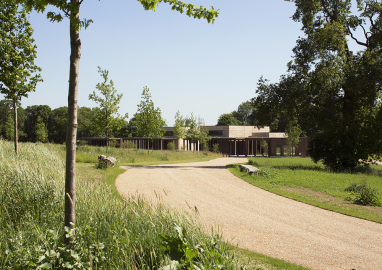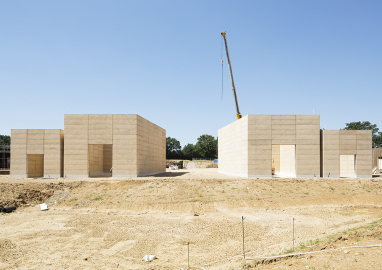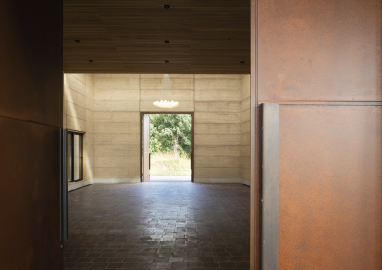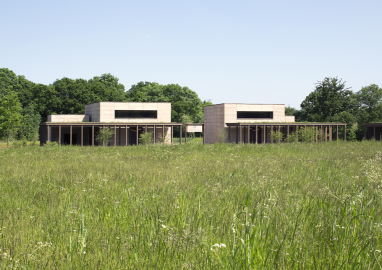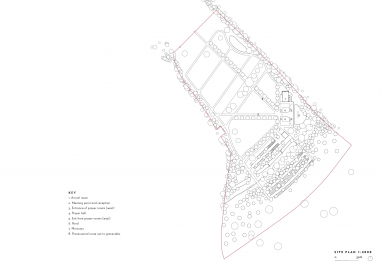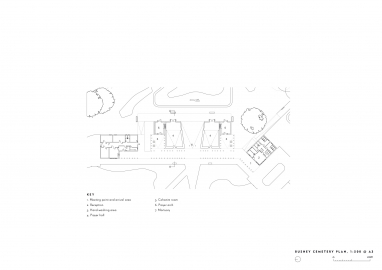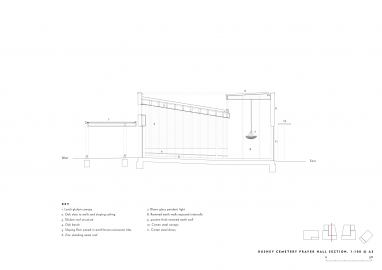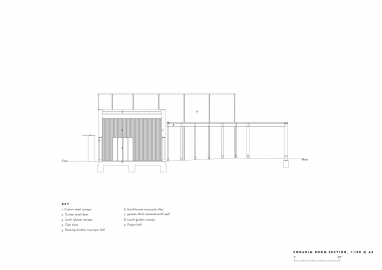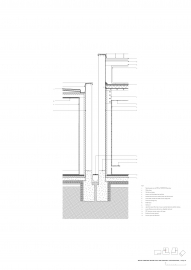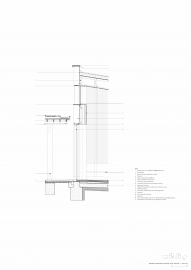Bushey Cemetery
Bushey Cemetery is a 16-acre site of outstanding natural beauty situated within the meadows of London’s green belt. Established in 1947 it is one of the most significant Jewish burial sites in the UK. The extension will allow for a further 8,000 burials over the next 60 years.
Designed around the landscape the buildings are part of their setting and when the cemetery is fully occupied will be returned to the earth and the site to the green belt.
A linear arrangement of buildings laid out along a north-south axis facilitates the movement of mourners. A timber colonnade forms the processional route to the prayer halls which are entered from the west and exited to the east.
Discretely embedded into a corner of the sloping site are two monolithic prayer halls. Built of rammed earth this organic material defines the overall design and was chosen for its symbolic and practical sensitivity to the Jewish faith, echoing the sentiment of the deceased being laid to rest in plain wooden caskets, returning to the earth.
A 10-year journey taken alongside the Jewish community required Waugh Thistleton to develop an understanding of the processional nature of the Jewish faiths’ practice of burial. With no established typology the form and layout of the buildings was not determined by the religion per se, but grew from an understanding of the process of Jewish burial and how this might relate to the site.
Flood risk was intrinsic to the site and therefore design and arrangement of the buildings. The new landscape uses a series of interconnecting swales and ponds to collect surface water from the highly impermeable clay soil.
Positioned in the lowest corner of the site the cemetery buildings maintain open views to the fields beyond the site. The prayer halls face east to Jerusalem and are embedded within the landscape. Sitting amongst the planting and oak trees they are cradled by the larch colonnade which masks their scale with one of human interaction. The varied colour and texture across the expansive walls of the prayer halls allows these imposing, tomb like structures to recede into the landscape.
Bushey Cemetery is built of the earth, a reference to the simplicity of the Jewish traditions. The austerity of the rammed earth reflects the simple burial traditions.
Rammed earth has been used for centuries but is relatively unknown in the UK. A moistened mixture of soil is compacted into a formwork which, when dried forms a dense, monolithic wall. Adding a small amount of lime/cement improves strength and durability over time. This is known as stabilised rammed earth (SRE).
There is no design standard in the UK for SRE. The team therefore had to justify the proposed design with repeated testing. A rammed earth specialist was engaged to ensure potential issues with the material and construction process could be addressed. Strength, durability, colour and texture were explored to provide a bespoke solution for the project.
SRE has strong sustainability credentials. Precise proportions of sand, limestone and earth mixed with a little cement and water, result in low embodied energy. The reception and mortuary buildings are constructed from well insulated pre-fabricated timber cassettes. PV panels provide energy while the high thermal mass will retain heat gains.

